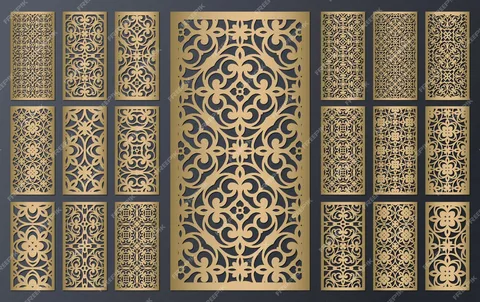Laser cut designs have revolutionized the creative industry, providing unparalleled precision and versatility for crafting intricate patterns. Whether for personal hobbies or professional applications, mastering laser cutting can open a world of possibilities. In this guide, we delve into the steps and techniques needed to create awe-inspiring laser cut designs tailored for both personal and business needs.
Understanding the Basics of Laser Cutting
Laser cutting technology employs a high-powered laser beam to cut, engrave, or etch materials. The precision of laser cutting lies in its ability to produce intricate designs without manual intervention, making it ideal for creating complex shapes. Understanding the basic components—such as the laser cutter, software, and materials—is crucial before embarking on any project.
The first step in crafting laser cut designs is selecting the right laser cutter. Options range from entry-level desktop models for personal use to industrial-grade machines for business applications. The type of machine determines the complexity and scale of the designs you can achieve. Familiarizing yourself with the capabilities and limitations of your equipment ensures a smoother design process.
Choosing the Right Materials for Your Designs
The choice of material significantly influences the outcome of your laser cut designs. Popular materials include wood, acrylic, leather, paper, and metals. Each material has unique characteristics that affect how it reacts to laser cutting, so understanding these properties is essential for achieving desired results.
For instance, wood and acrylic are versatile and easy to cut, making them ideal for intricate designs and prototypes. Metals require specialized laser cutters and are often used for durable business applications. Testing the material’s thickness and compatibility with your laser cutter can prevent common pitfalls, such as charring or incomplete cuts, ensuring a polished final product.
Mastering Design Software for Laser Cutting
Creating stunning laser cut designs begins with the right design software. Tools like Adobe Illustrator, CorelDRAW, and AutoCAD are popular for their precision and versatility. These programs allow users to create vector-based designs, the preferred format for laser cutting due to its scalability and clarity.
Learning the nuances of your chosen software is key to achieving professional results. Features such as layering, path editing, and shape merging allow for greater control over your designs. Tutorials, online courses, and practice projects can enhance your proficiency, enabling you to translate creative ideas into precise, cut-ready files.
Optimizing the Laser Cutting Process
Optimization is a critical step in producing high-quality laser cut designs. Proper machine calibration ensures accuracy and prevents material wastage. Factors like laser power, speed, and focal distance must be adjusted based on the material and design complexity.
Conducting test cuts is an effective way to refine settings. This process allows you to identify and correct issues such as jagged edges or uneven cuts. Additionally, maintaining your laser cutter through regular cleaning and calibration extends its lifespan and ensures consistent performance.
Incorporating Creative Techniques for Unique Designs
Adding a creative flair to your laser cut designs can elevate them from functional to extraordinary. Techniques like layering, engraving, and combining materials enable you to produce intricate and visually appealing pieces. Layered designs create a three-dimensional effect, while engraving adds texture and personalization.
Experimentation is key to discovering unique design possibilities. Combining different materials or integrating other crafting techniques, such as painting or assembly, can result in innovative and marketable products. Whether for personal expression or business branding, creativity ensures your designs stand out in a competitive market.
Conclusion
Creating stunning laser cut designs involves a combination of technical know-how, material selection, software expertise, process optimization, and creative experimentation. By mastering these elements, you can produce designs that captivate and serve various purposes, from personalized gifts to professional branding materials. With dedication and practice, the art of laser cutting can become a valuable skill for both personal and business projects.





